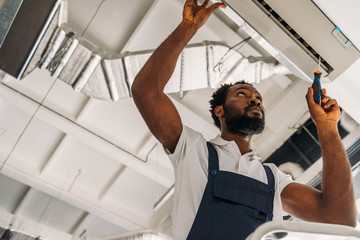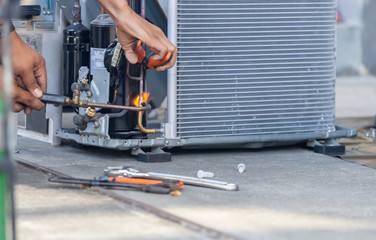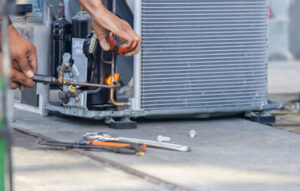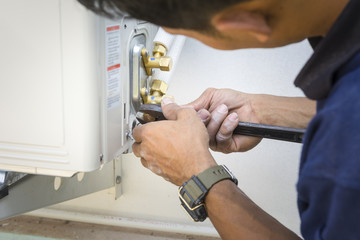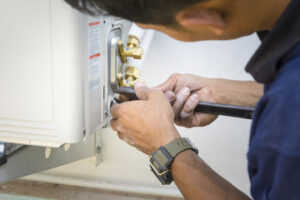HVAC Round Rock systems play a crucial role in maintaining indoor comfort. They regulate temperature, humidity, and air quality. Modern systems are designed to improve energy efficiency and enhance comfort. Proper installation and maintenance ensure long-term performance.
Heating systems provide warmth during colder months. Furnaces, boilers, and heat pumps generate and distribute heat. Consistent heating prevents cold spots and improves comfort. Energy-efficient systems reduce operating costs and environmental impact.
Air conditioning systems cool indoor spaces during hot weather. They extract heat and moisture from the air to create a comfortable environment. Properly sized systems prevent overcooling and energy waste. Regular maintenance improves cooling efficiency.
Ventilation systems improve air circulation and quality. Fresh air is introduced while stale air is removed. Balanced ventilation prevents moisture buildup and mold growth. Clean air enhances overall health and comfort.
Humidity control is essential for maintaining comfort. High humidity causes discomfort and promotes mold growth. Low humidity leads to dry skin and respiratory issues. Dehumidifiers and humidifiers help maintain balanced moisture levels.
Smart thermostats enhance HVAC efficiency and convenience. They learn user preferences and adjust settings automatically. Remote access allows adjustments from any location. Smart technology reduces energy consumption and improves comfort.
Zoning systems provide personalized temperature control. Different areas of a building can be heated or cooled independently. This prevents energy waste and improves overall comfort. Zoning systems extend the lifespan of HVAC equipment.
Ductless systems offer flexibility and improved efficiency. They are ideal for homes without existing ductwork. Individual air handlers allow precise temperature control. Ductless systems are easy to install and maintain.
Air filters play a key role in maintaining indoor air quality. High-efficiency filters capture dust, pollen, and other pollutants. Clean filters improve airflow and system performance. Regular replacement ensures better air quality and efficiency.
Heat pumps provide both heating and cooling. They transfer heat rather than generate it, improving efficiency. Reversible operation allows year-round use. Heat pumps reduce energy costs and environmental impact.
Geothermal systems use underground heat for heating and cooling. Ground-source heat provides consistent temperature regulation. These systems are highly efficient and environmentally friendly. Geothermal technology reduces operating costs and energy use.
Radiant heating systems deliver heat through floors or walls. Even heat distribution improves comfort without drafts. Radiant heating operates quietly and efficiently. Lower energy consumption reduces utility costs.
Energy recovery ventilators (ERVs) and heat recovery ventilators (HRVs) improve ventilation efficiency. They transfer heat and moisture between incoming and outgoing air. This reduces the load on heating and cooling systems. ERVs and HRVs enhance indoor air quality and comfort.
Variable-speed systems adjust output based on demand. This prevents temperature fluctuations and reduces energy use. Quiet operation improves comfort and efficiency. Variable-speed technology extends the lifespan of HVAC systems.
Proper insulation supports HVAC efficiency. Well-insulated walls, floors, and ceilings reduce energy loss. Consistent temperatures improve overall comfort. Improved insulation lowers heating and cooling costs.
Ceiling fans enhance HVAC performance by improving air circulation. They distribute warm or cool air more evenly. Reversible operation supports year-round use. Ceiling fans reduce strain on HVAC systems and improve comfort.
Smart vents adjust airflow based on room occupancy and temperature. Automated adjustments prevent overcooling or overheating. This reduces energy waste and improves comfort. Smart vents enhance overall HVAC efficiency.
Air purification systems remove contaminants from indoor air. HEPA filters, UV lights, and ionizers eliminate allergens and bacteria. Cleaner air reduces respiratory issues and improves comfort. Air purifiers extend the life of HVAC systems.
Proper refrigerant levels are essential for cooling efficiency. Low refrigerant causes poor cooling and higher energy use. Technicians check for leaks and recharge refrigerant as needed. Balanced refrigerant levels improve system performance.
Thermal expansion valves regulate refrigerant flow. Proper control prevents coil freezing and improves cooling efficiency. Adjustments ensure balanced refrigerant levels. This enhances overall system reliability and performance.
Duct cleaning removes dust and debris from ventilation systems. Clean ducts improve airflow and reduce allergen buildup. Professional cleaning prevents mold growth and improves efficiency. Clean ducts enhance indoor air quality and comfort.
Hybrid systems combine heat pumps and furnaces for optimal efficiency. They switch between heating sources based on outdoor conditions. This reduces energy consumption and operating costs. Hybrid systems provide reliable performance in varying weather.
Indoor air quality monitoring helps maintain a healthy environment. Sensors detect pollutants, humidity, and carbon dioxide levels. Systems adjust automatically to maintain optimal conditions. Clean air improves health and comfort.
Condenser coil cleaning prevents overheating and poor performance. Dirty coils reduce heat exchange efficiency. Professional cleaning restores coil performance. Clean condensers improve cooling efficiency and lower energy use.
Defrost cycles prevent ice buildup on outdoor units. Proper operation ensures consistent heating and cooling. Technicians adjust defrost settings for efficiency. Regular defrost cycles maintain system performance.
Central HVAC systems provide consistent heating and cooling for large spaces. Proper installation ensures even distribution and reliable performance. Zoned systems allow personalized temperature control. Central systems offer quiet operation and improved comfort.
Air balancing ensures consistent temperatures throughout a building. Technicians adjust airflow to correct hot and cold spots. Proper air balancing improves comfort and reduces strain on the system. Balanced airflow increases overall efficiency.
Attic ventilation supports HVAC efficiency. Proper airflow reduces heat buildup and moisture retention. Ventilation systems prevent roof damage and improve comfort. Balanced attic ventilation enhances energy efficiency.
Compressor maintenance prevents breakdowns and extends lifespan. Technicians check for leaks, electrical issues, and pressure imbalances. Proper lubrication and cleaning maintain performance. Reliable compressors improve overall system operation.
Remote monitoring systems allow users to track performance and energy use. Alerts notify users of maintenance issues and inefficiencies. Remote adjustments improve system efficiency and prevent failures. Smart monitoring enhances comfort and convenience.
Programmable thermostats improve energy efficiency by allowing customized schedules. Adjusting settings based on occupancy reduces energy waste. This prevents overworking the system and lowers utility costs. Consistent temperatures improve comfort and system performance.
Heat exchangers transfer heat between indoor and outdoor air. Clean exchangers improve efficiency and prevent corrosion. Regular maintenance reduces wear and extends lifespan. Proper heat exchange supports consistent temperature control.
Sealing ductwork prevents energy loss and improves efficiency. Leaky ducts reduce airflow and increase utility costs. Sealing ducts enhances system performance and comfort. Well-maintained ductwork supports consistent temperature control.
Professional installation ensures proper HVAC performance. Technicians calculate load requirements and design layouts for optimal airflow. Proper placement reduces strain and improves efficiency. Expert installation prevents future repair issues.
Maintenance plans help keep HVAC systems in peak condition. Regular inspections and tune-ups identify potential issues. Early detection reduces repair costs and improves efficiency. Maintenance plans extend the lifespan of HVAC systems.
Cooling towers support large-scale HVAC systems. They remove heat from water and improve cooling efficiency. Proper maintenance ensures consistent performance. Cooling towers enhance overall system reliability.
Carbon monoxide detectors improve HVAC safety. They monitor air quality and alert occupants to dangerous levels. Proper installation ensures accurate readings. Early detection prevents health risks and improves safety.
HVAC systems are essential for maintaining indoor comfort and air quality. Advanced technology improves efficiency and reduces operating costs. Professional installation and regular maintenance extend system lifespan. Reliable HVAC systems provide consistent comfort and improved health.

